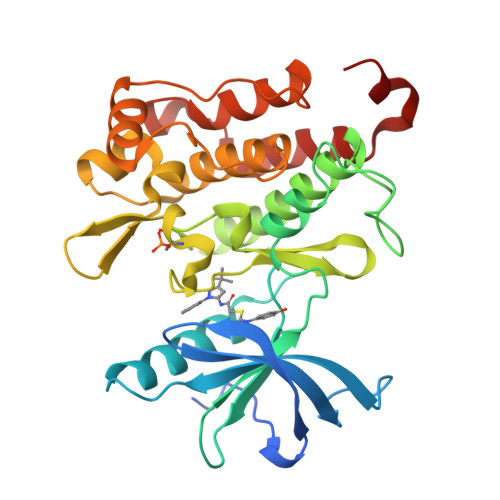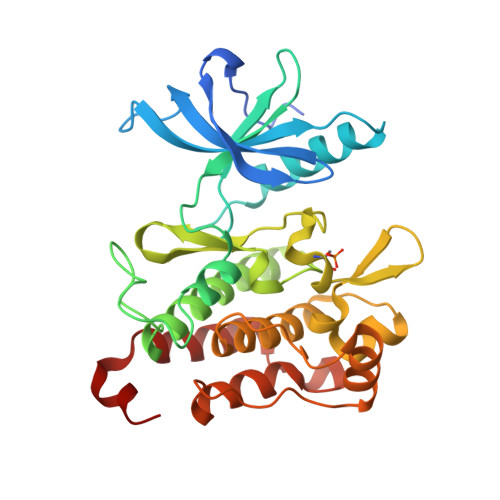Type 2 inhibitor leads of human tropomyosin receptor kinase (hTrkA).
Subramanian, G., Bowen, S.J., Zhu, Y., Roush, N., Zachary, T., Javens, C., Williams, T., Janssen, A., Gonzales, A.(2019) Bioorg Med Chem Lett 29: 126624-126624
- PubMed: 31444087
- DOI: https://doi.org/10.1016/j.bmcl.2019.126624
- Primary Citation of Related Structures:
6PL2, 6PL3 - PubMed Abstract:
In silico virtual screening using the ligand-based ROCS approach and the commercially purchasable compound collection from the ZINC database resulted in the identification of distinctly different and novel acetamide core frameworks with series representatives 1a and 2a exhibiting nanomolar affinity in the kinase domain only hTrkA HTRF biochemical assay. Additional experimental validation using the Caliper technology with either the active or inactive kinase conditions demonstrated the leads, 1a and 2a, to preferentially bind the kinase inactive state. X-ray structural analysis of the kinase domain of hTrkA…1a/2a complexes confirmed the kinase, bind the inhibitor leads in the inactive state and to exhibit a type 2 binding mode with the DFG-out and αC-helix out conformation. The leads also demonstrated sub-micromolar activity in the full length hTrkA cell-based assay and selectivity against the closely related hTrkB isoform. However, the poor microsomal stability and permeability of the leads is suggestive of a multiparametric lead optimization effort requirement for further progression.
Organizational Affiliation:
Veterinary Medicine Research & Development, Zoetis, 333 Portage Street, Bldg. 300, Kalamazoo, MI 49007, USA. Electronic address: govindan.subramanian@zoetis.com.




















